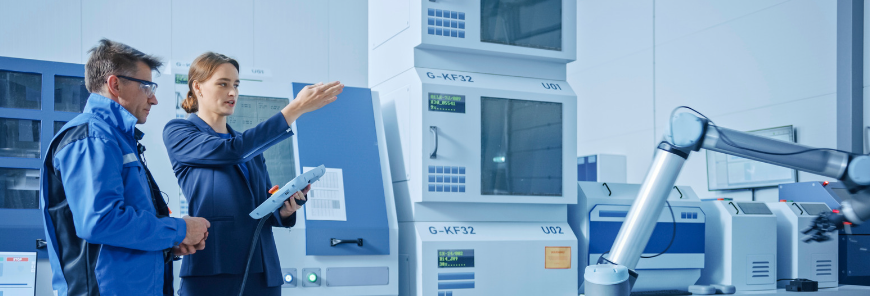How Design for X (DFX) methodology could be applied to achieve innovation outcomes when designing a new medical device product
By collaborating with DFX experts across methodologies, medical device companies can enhance their innovative designs, making them not only groundbreaking in functionality but also optimized for manufacturing, cost-effectiveness, reliability, and user experience.
This holistic approach to design can lead to products that are more likely to succeed in the market and provide sustained value to healthcare providers and patients.
Let's dive deeper into each design area with examples and potential innovation outcomes for each.
The focus and discipline of DFX is a powerful tool if used as part of a broader strategic approach to developing product/process differentiation, and a sustainable advantage against competition. Involve Design for X in Strategy. Once your team has determined the focus of your strategy, place the focus of design on developing competitive advantage.
At Boston Engineering, DFX is a core part of creating values during our product development process. We focus on several key DFX areas that align with our expertise:
- Design for Manufacturability (DFM)
- Design for Assembly (DFA)
- Design for Cost (DFC)
- Design for Testability (DFT)
- Design for Reliability (DFR)
- Design for Serviceability/Maintainability (DFS)
- Design for Usability (DFU)
- Design for Modularity (DFMo)
Learn more about Design for X (DFX) at Boston engineering: Boston Engineering Design for X

The following are illustrative examples of a potential product design decisions a company might make to take strategic advantage of the noted benefits of introducing a new product to market vs. updating an existing product. The cases are presented to evoke thoughts and questions around the potential business case for such decisions, and the reasoning behind each.
(continued from above)
Design for Manufacturability (DFM)
Example: For the brain-computer interface for paralyzed patients
A DFM expert could help design the interface's components to be easily manufactured at scale. This might involve:
- Simplifying the geometry of neural sensors for easier production
- Selecting materials compatible with automated manufacturing processes
- Standardizing components across different product variants
Innovation outcome: A more scalable production process, potentially reducing costs and improving availability of this cutting-edge technology.
Design for Assembly (DFA)
Example: For the portable, AI-powered ultrasound device
Working with a DFA expert could focus on:
- Reducing the number of components in the device
- Designing parts that can only be assembled in the correct orientation
- Incorporating snap-fit connections to minimize the need for fasteners
Innovation outcome: A more compact and robust device that's quicker to assemble, potentially enabling point-of-care use in various medical settings.
Design for Cost (DFC)
Example: For the non-invasive continuous glucose monitor
A DFC expert might suggest:
- Using multi-functional components to reduce part count
- Identifying alternative materials that maintain performance but at lower cost
- Optimizing the design for minimal waste during production
Innovation outcome: A more affordable device, potentially increasing accessibility for diabetic patients and market penetration.
Design for Testability (DFT)
Example: For the minimally invasive heart valve repair tool
DFT considerations could include:
- Incorporating built-in self-test capabilities
- Designing easily accessible test points
- Creating modular subassemblies that can be tested independently
Innovation outcome: Improved quality assurance and easier regulatory compliance, crucial for a high-risk surgical device.
AL & ML in Health Care - The Medical Workplace Multiplier
 In this new Whitepaper, learn how AI and ML can enhance the medical workforce’s abilities and improve patient outcomes.
In this new Whitepaper, learn how AI and ML can enhance the medical workforce’s abilities and improve patient outcomes.
While some view AI as a potential job replacement threat, the reality is that these advanced capabilities are better positioned as “workforce multipliers” that will amplify the abilities of doctors, nurses, technicians and other medical professionals.
Download your Free Copy Today!
Artificial intelligence and machine learning are emerging technologies that have immense potential to reshape healthcare delivery and medical practice.
Design for Reliability (DFR)
Example: For the novel antimicrobial wound dressing
A DFR expert might focus on:
- Conducting failure mode and effects analysis (FMEA)
- Designing redundancies for critical functions
- Selecting materials resistant to degradation in typical use environments
Innovation outcome: A more dependable product that maintains its antimicrobial properties over time, potentially improving patient outcomes.
Design for Serviceability/Maintainability (DFS)
Example: For the surgical robot
DFS considerations could include:
- Designing easily replaceable modules
- Incorporating diagnostic systems for quick problem identification
- Ensuring accessibility to components likely to need servicing
Innovation outcome: Reduced downtime and maintenance costs, potentially increasing adoption in healthcare facilities.
Design for Usability (DFU)
Example: For the portable ultrasound device
A DFU expert might suggest:
- Conducting extensive user research with healthcare professionals
- Designing an intuitive user interface for the AI features
- Ensuring the device is comfortable to hold and operate for extended periods
Innovation outcome: Improved user adoption and effectiveness, potentially expanding the device's use cases.
Design for Modularity (DFMo)
Example: For the brain-computer interface
DFMo considerations could include:
- Creating a standardized interface between the neural sensors and signal processing unit
- Designing interchangeable modules for different types of robotic limbs
- Developing a scalable architecture to accommodate future enhancements
Innovation outcome: A more flexible and upgradeable system, potentially extending the product's lifespan and adaptability to different patient needs.

New eBook Available Now!
"Leveling Up Existing Products through DFX"
-Download Insights from a DFX Subject Matter Expert-
 Developing successful new products from scratch is challenging enough, but what about improving on existing designs?
Developing successful new products from scratch is challenging enough, but what about improving on existing designs?
In this eBook, we’ll dive into the real-world experiences of DFX subject matter expert John DePiano, exploring the common areas where existing product owners excel, as well as the key opportunities where targeted DFX support can drive major improvements.

Understanding the Importance of a DFX approach in medical device design & development
Applying Design for X (DFX) methodologies upfront in medical device development optimizes the entire lifecycle by improving manufacturability, testability, reliability, usability, and other critical characteristics. This avoids costly redesigns later on, facilitates high-quality products that satisfy customers, reduces manufacturing and service costs, and supports flexibility through modularity and platforms. The holistic perspective of DFX drives efficient, cost-effective delivery of successful products that provide competitive advantage. Investing in DFX early pays dividends across the entire product lifespan.
Do you offer training on DFX for your medical engineering teams?
Education is critical to effectively implement DFX principles. We provide training tailored to your engineers’ roles and product lines. This includes overall DFX methodology, deep dives into specific disciplines like design for reliability or manufacturability, and practical application workshops. Our hands-on approach combines real-world examples and case studies with tutorials on leading DFX software tools. The goal is building organizational DFX expertise and establishing repeatable processes that endure beyond individual projects. Investing in DFX knowledge pays dividends across your entire product portfolio.

Ready to Begin your next medical device DFX Project?
 Whether you’ve created a new technology, or have an innovative way to use an existing solution, Boston Engineering will turn your ideas into reality. Our experts and Industry Partners will enhance your current team or manage the entire Product Development Process from Market Analysis to Production. Don't leave complex projects or high visibility product launches to chance. Know you're going to get the results you want by working with industry leaders in design, development, and deployment of innovative products driven by Novel Engineering. Contact Boston Engineering Today to get started.
Whether you’ve created a new technology, or have an innovative way to use an existing solution, Boston Engineering will turn your ideas into reality. Our experts and Industry Partners will enhance your current team or manage the entire Product Development Process from Market Analysis to Production. Don't leave complex projects or high visibility product launches to chance. Know you're going to get the results you want by working with industry leaders in design, development, and deployment of innovative products driven by Novel Engineering. Contact Boston Engineering Today to get started.
No matter the challenge, our team possesses the expertise in the engineering disciplines and technologies you need to bring your vision to life. Impossible Challenge? Try Us.
-1.png?width=2000&height=279&name=MED%20Coffee%20Talk%20Mastering%20Use%20Cases%20%26%20Cybersecurity%20(2)-1.png)
Impossible Challenge? Try Us.
Selecting a partner to help you complete your design project is a valuable option to reduce project duration and save money.
The Boston Engineering product development system encompasses DFX to ensure a smooth product launch and success in the marketplace. Boston Engineering has DFX knowledge and experience to address aspects and values of a product such as manufacturability, test, reliability, safety, serviceability, cost, and compliance with industry standards and government regulations.

Imagine your Impact: Stay up-to date- with the latest insights and trends we're watching. Add your email address below and sign up for a Monthly Summary of our most impactful posts!











